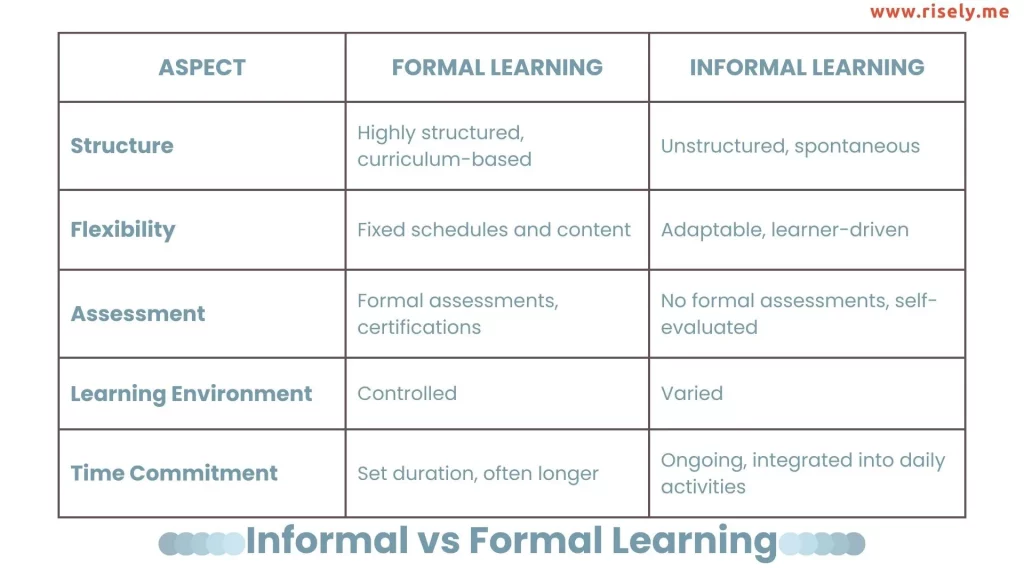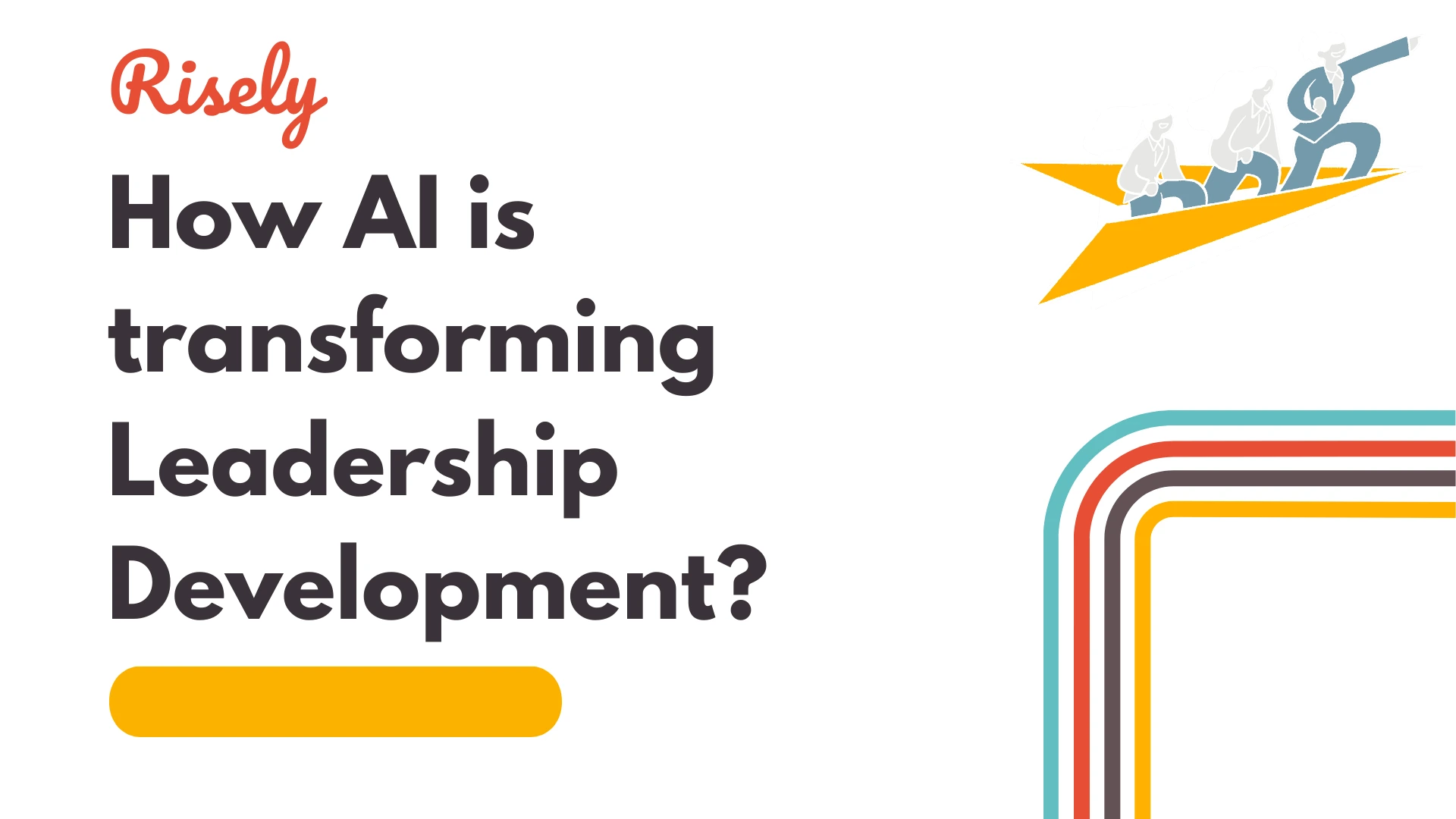Comparing Informal vs Formal Learning: A Quick Guide
Fast-paced work environments make the need for quality employee training programs strong, keeping your team agile and ready for what’s coming. This blog is designed to help you understand the two primary ways your employees learn: formal and informal learning. We will look into their definitions, benefits, and basic differences to put you in a better place to judge which works best for your team. As an L&D head in this process, you’re uniquely positioned to lead and shape how your team learns and adapts. By the end, you’ll have clear insight into how to take full advantage of both formal and informal learning in your training and development programs, in a manner that keeps your team adaptable and always growing for the success of your goals.Defining Formal Learning
Formal learning refers to structured training programs typically found in a classroom setting or through online training platforms. It follows a more traditional delivery method, with clear goals and objectives usually fronted by a certified instructor.
Formal learning is a part of formal training programs, with special designs to meet particular learning goals and outcomes. Examples would be compliance training, product training, and safety training. Formal learning environments provide employees with a more effective method of attaining new knowledge and skills because there is clarity on the focus or achievement of definite goals. This approach is very helpful in organizations that have various departments needing similar training. Formal learning ensures consistency in training delivery and provides a record of time spent on learning activities.What are some examples of formal learning in the workplace?
Let’s look at some examples of formal learning:- Safety Training: Companies can hold safety training sessions led by a certified instructor. These sessions help employees learn about workplace dangers, safe ways to work, and what to do in emergencies.
- Technical Skills Development: Formal learning programs can help employees gain the specific technical skills they need. This might involve learning how to use certain software or how to operate specialized machines.
- Compliance Training: Formal learning is important for making sure companies follow rules and ethical standards. This includes training on data security, anti-harassment, and the requirements set by compliance boards.
Benefits of Formal Learning for L&D Teams
Formal learning has many benefits that make it important for L&D teams:- Organized Learning: As an L&D leader, you know how crucial it is to ensure consistency in training across the company. Formal training lets you provide organized and uniform learning to your teams in a structured manner. This way, you will be sure that everybody has acquired the same level of knowledge that is considered most important and that it does so in support of shared understanding and alignment to company objectives.
- Knowledge from the Experts: Tapping into subject matter experts as part of your formal training programs is a surefire way to enhance your team’s learning experience. By opening up avenues to quality content and hands-on advice, you are affording your team direct access to those who know best. This not only enriches their learning but also speeds up the development of essential competencies.
- Focused Skill Building: Formal learning programs can be created on analyzing skill gaps or role-specific competency enhancement within the organization. You will be able to choose highly relevant content, design engaging activities, and set clear goals to make sure the training is comprehensive but highly effective in driving the success of your team.
Exploring Informal Learning
It is a more natural and flexible way to learn. Informal learning happens through social interaction, hands-on experiences, and exploring on your own. It naturally takes place in daily interactions, observations, and when solving problems.
In the workplace, informal learning includes many activities. Employees gain knowledge by talking with coworkers establishing community-based learning, looking for information by themselves, and trying new methods at work. Informal learning is ongoing and often happens by chance. However, it is important for helping people adapt and improve over time.What are some examples of informal learning in the workplace?
Informal learning happens in different ways at work:- Peer-to-Peer Learning: Workers often ask their coworkers for help, advice, and to share knowledge. This type of informal training happens naturally through talking, mentoring, and working together on projects.
- On-the-Job Learning: A lot of what workers learn comes from hands-on work in their jobs. They improve their skills, solve problems as they arise, and gain real-life knowledge through job training.
- Self-Directed Learning: Employees often look for information and resources on their own to learn more. This can mean watching online videos, joining webinars, or reading articles related to their field.
Advantages of Informal Learning in the Workplace
Informal learning has its pros that are beneficial for L&D teams:- Relevance and Context: You already understand how valuable it is to link learning to day-to-day work, having been an L&D leader yourself. Informal learning happens naturally as a matter of course in everyday work; your team will be able to take up the new knowledge and skills that they learn and immediately apply these in their work. This will mean that the learning is highly relevant to them, directly linked to the challenges they face, and therefore practical and impactful.
- Flexibility and Accessibility: Flexibility and accessibility are one of the main advantages of informal learning. Unlike formal training, it does not require rigid schedules or formats. Learning can take place at any time, in diverse social contexts, and through different channels. It becomes easy for your team to learn the way that best fits their preference, which means greater ease in the absorption and retention of information.
- Encourages Curiosity and Initiative: You allow employees to create an environment that embraces informal learning in all its forms. Stimulating independent learning nurtures curiosity and triggers problem-solving activities to bring about continuous improvement. This proactive attitude will keep your team agile, inventive, and ensure long-term success.
What Are The Key Differences Between Formal and Informal Learning?
While both formal and informal learning are essential aspects of learning and development at work. As an L&D leader, recognizing their distinct characteristics can significantly enhance your training strategy. Formal learning is structured and typically involves assessments and certifications. It’s ideal for ensuring that everyone in your organization receives consistent information and adheres to necessary protocols, creating a unified knowledge base. On the other hand, informal learning is more fluid and driven by the learner’s curiosity and experiences. It often happens organically during daily tasks, making it perfect for developing essential skills like adaptability, problem-solving, and continuous improvement. By understanding these differences, you can strategically leverage both approaches to create a well-rounded learning environment that supports both compliance and innovation within your team.
Structured vs. Unstructured Settings
One of the key differences between formal and informal learning lies in how the learning environment is structured. Formal learning is built on a well-defined system, complete with set curriculums, clear goals, and assessments. As an L&D leader, you know how important it is to ensure consistency, accountability, and measurable outcomes in training programs. This structure helps you track progress and maintain a standard across your team. Informal learning, on the other hand, offers a more relaxed approach. It happens naturally through everyday interactions and personal experiences. Your team members can dive into topics that spark their interest, guided by curiosity rather than a strict curriculum. This kind of learning thrives on spontaneity, allowing for a more organic development of skills and knowledge. When it comes to tools, formal learning often relies on Learning Management Systems (LMS) to deliver online training and monitor progress. In contrast, informal learning might use more flexible platforms like online forums, internal wikis, or social media channels where your team can share knowledge and collaborate in real-time. This adaptability makes informal learning a powerful complement to more structured training methods, giving your team the freedom to learn in ways that resonate with them.Flexibility
Formal learning is designed with fixed schedules and content, providing a structured approach to training. This rigidity ensures that everyone follows the same curriculum at the same pace, which is crucial for consistency across your team. However, there is still some scope of flexibility with options like online training modules where your team can move through content at their own pace and revisit materials whenever they need a refresher. Informal learning offers your team the freedom to learn on their own terms. They can dive into new information, chat with colleagues, and explore fresh ideas whenever it suits them. In today’s world of remote work and flexible schedules, this kind of learning flexibility is more important than ever. It allows your team to integrate learning into their daily routines naturally, making it a part of their work-life rhythm. To make your learning programs truly adaptable—be it formal or informal—it’s essential to mix things up with different formats and resources. This allows each of your team members to learn the way that works best for them. This personalized approach keeps them plugged into the learning process but also makes more sense and be more effective.Assessment Type
Formal learning often results in certificates or degrees, which are more than just pieces of paper—they’re a testament to the knowledge and skills a person has acquired. You can formally assess your team’s skills under this type of learning and even gain leadership skills yourself through coaching certification programs. On the other hand, informal learning might not come with a certificate, but it’s just as valuable for personal and professional development. Through informal learning, your team can cultivate crucial skills like critical thinking, adaptability, and problem-solving. Both formal and informal learning play important roles in helping your team members grow and succeed. By combining structured training with opportunities for spontaneous learning, you’re supporting their journey to excel in their careers and navigate the shifting landscape of their industry.Learning Environment
Formal learning environments are usually well-organized and controlled, whether in a physical classroom or through virtual training sessions on an online platform. You can even combine both settings. In this structured setup, you guide the pace and direction of the learning, ensuring that everyone follows the same path and meets specific objectives. In contrast, informal learning environments are much more flexible and diverse. They often arise naturally through day-to-day interactions at work—like chatting with your colleagues, seeking advice from mentors, or collaborating on projects. Informal learning also happens online, in spaces like industry forums, online communities, or professional networking sites. Organizations often support informal learning in various ways. Some create dedicated online platforms for knowledge sharing, while others foster employee groups around common interests, encouraging team members to connect and learn from one another. This informal approach helps build a learning culture that’s adaptable and responsive to the needs of your team.Time Commitment
Formal learning often requires a dedicated time commitment. Your team might need to carve out time for a training course, workshop, or online module, with attendance tracked and deadlines to meet. This structured approach helps them focus on acquiring specific knowledge or skills, ensuring a thorough learning experience. Informal learning, on the other hand, offers much more flexibility. Your team can pick up new skills during breaks, while commuting, or in those spare moments throughout their day. Although there’s no formal record of these quick learning sessions, they accumulate over time and significantly contribute to overall growth. The choice between formal and informal learning often depends on the complexity of the topic, the format of the training, and the learner’s specific goals. By understanding these needs, you can tailor your approach to support your team’s development in a way that best suits their schedules and learning styles.How to Integrate Formal and Informal Learning Strategies?
The value of an L&D strategy that is rich and adaptive is unparalleled. Forward-thinking organizations like yours are now combining formal and informal learning to build a robust learning culture. By integrating structured programs with opportunities for spontaneous, on-the-job learning, you can make the most of both approaches. This combination allows your team members to benefit from the depth and consistency of formal training while also enjoying the flexibility and relevance of informal learning. Formal learning provides the foundational knowledge they need, while informal learning moments, like casual discussions and on-the-fly problem-solving, support continuous growth and adaptability. By nurturing a culture of formal and informal learning, you empower your team not just with upskilling but also with the kind of preparation needed to tackle newer challenges with ease and confidence. This helps balance the scales so that your employees are well-equipped to meet the ever-changing demands of their jobs and the industry.Examples of Successful Integration in Organizational Settings
Here are some practical examples of how organizations successfully integrate formal and informal learning:| FORMAL LEARNING APPROACH | INFORMAL LEARNING APPROACH | |
| Onboarding | Structured onboarding program with modules for company policies, product knowledge, and role-specific training delivered through an online training platform. | Socialization events, mentorship programs, and peer-to-peer learning opportunities for new hires to connect, ask questions, and share experiences. |
| Sales Training | Formal training sessions on new product features, sales methodologies, and competitive analysis. | Post-training role-playing exercises, peer coaching sessions, access to a shared library of sales resources, and online forums for discussing challenges and best practices. |
| Soft Skill Development | Workshops on communication, teamwork, and leadership skills facilitated by external trainers or internal subject matter experts. | Creation of internal communities of practice focused on specific soft skill topics, peer-to-peer feedback mechanisms, and opportunities to apply newly learned skills in real-world work scenarios. |
Conclusion
In conclusion, knowing how to balance formal and informal learning is important for good development. Formal learning gives a clear structure and certifications. On the other hand, informal learning gives more flexibility and helps with personal growth. By combining both types of learning, organizations can build a complete learning environment that fits many learning styles and needs. When done well, this can improve employee development and help the organization succeed. Embrace the power of mixing these learning strategies to fully enhance your team’s growth and performance at work.Make the right mix of learning methods with our free 70-20-10 plan template.
Download a free copy to create your very own 70-20-10 learning plan that brings life to L&D strategies.
AI and Leadership Development: Driving Synergy for Growth
AI and Leadership Development: Driving Synergy for Growth You know the frustration all too well. Your organization invests thousands in…
How Are AI Learning Platforms Transforming Leadership Development?
How Are AI Learning Platforms Transforming Leadership Development? As an L&D leader, you’re likely familiar with this frustrating reality: 82%…
5 Essential AI Skills for L&D Leaders
5 Essential AI Skills for L&D Leaders According to LinkedIn’s 2025 Workplace Learning Report(1), 71% of L&D professionals are now…
How to Create a Course with AI: A Guide for L&D Professionals
How to Create a Course with AI: A Guide for L&D Professionals According to a McKinsey survey(1), only 11% of…
Building an Ultimate Leadership Development Action Plan
How to Build a Leadership Development Action Plan? Having a strong Leadership Development Action Plan is more critical than ever…


